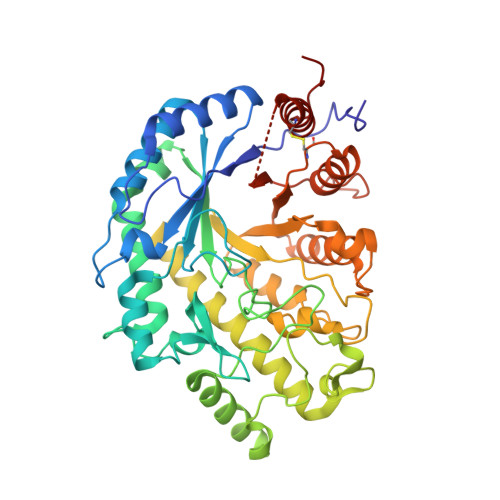Structure of maize BZR1-type beta-amylase BAM8 provides new insights into its noncatalytic adaptation.
Sun, F., Palayam, M., Shabek, N.(2022) J Struct Biol 214: 107885-107885
- PubMed: 35961473
- DOI: https://doi.org/10.1016/j.jsb.2022.107885
- Primary Citation of Related Structures:
7UPV - PubMed Abstract:
Plant β-amylase (BAM) proteins play an essential role in growth, development, stress response, and hormone regulation. Despite their typical (β/α) 8 barrel structure as active catalysts in starch breakdown, catalytically inactive BAMs are implicated in diverse yet elusive functions in plants. The noncatalytic BAM7/8 contain N-terminal BZR1 domains and were shown to be involved in the regulation of brassinosteroid signaling and possibly serve as sensors of yet an uncharacterized metabolic signal. While the structures of several catalytically active BAMs have been reported, structural characterization of the catalytically inactive BZR1-type BAMs remain unknown. Here, we determine the crystal structure of β-amylase domain of Zea mays BAM8/BES1/BZR1-5 and provide comprehensive insights into its noncatalytic adaptation. Using structural-guided comparison combined with biochemical analysis and molecular dynamics simulations, we revealed conformational changes in multiple distinct highly conserved regions resulting in rearrangement of the binding pocket. Altogether, this study adds a new layer of understanding to starch breakdown mechanism and elucidates the acquired adjustments of noncatalytic BZR1-type BAMs as putative regulatory domains and/or metabolic sensors in plants.
- Department of Plant Biology, College of Biological Sciences, University of California, Davis, CA 95616, USA.
Organizational Affiliation:

















